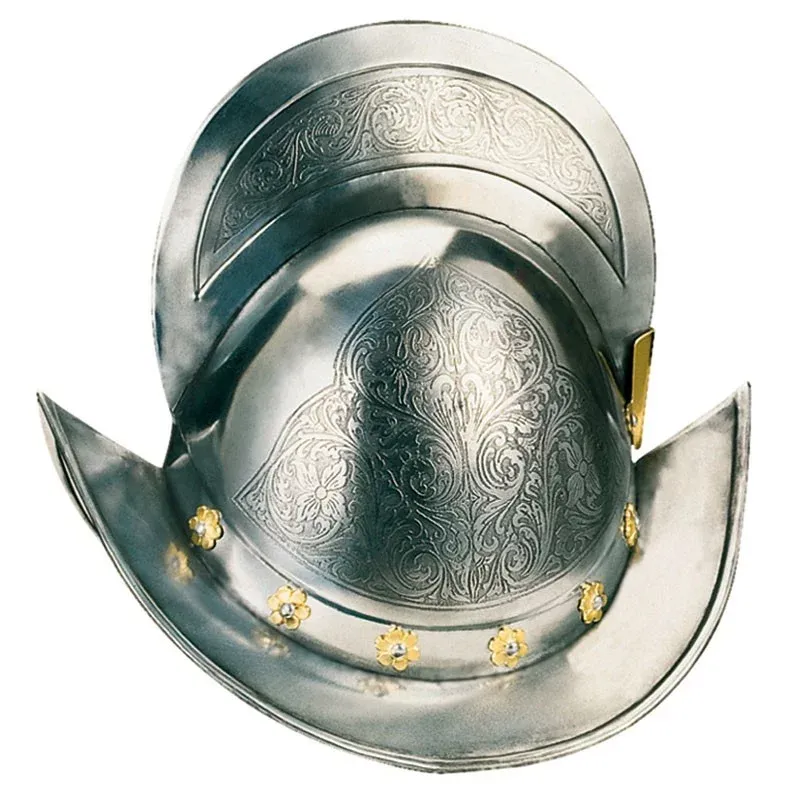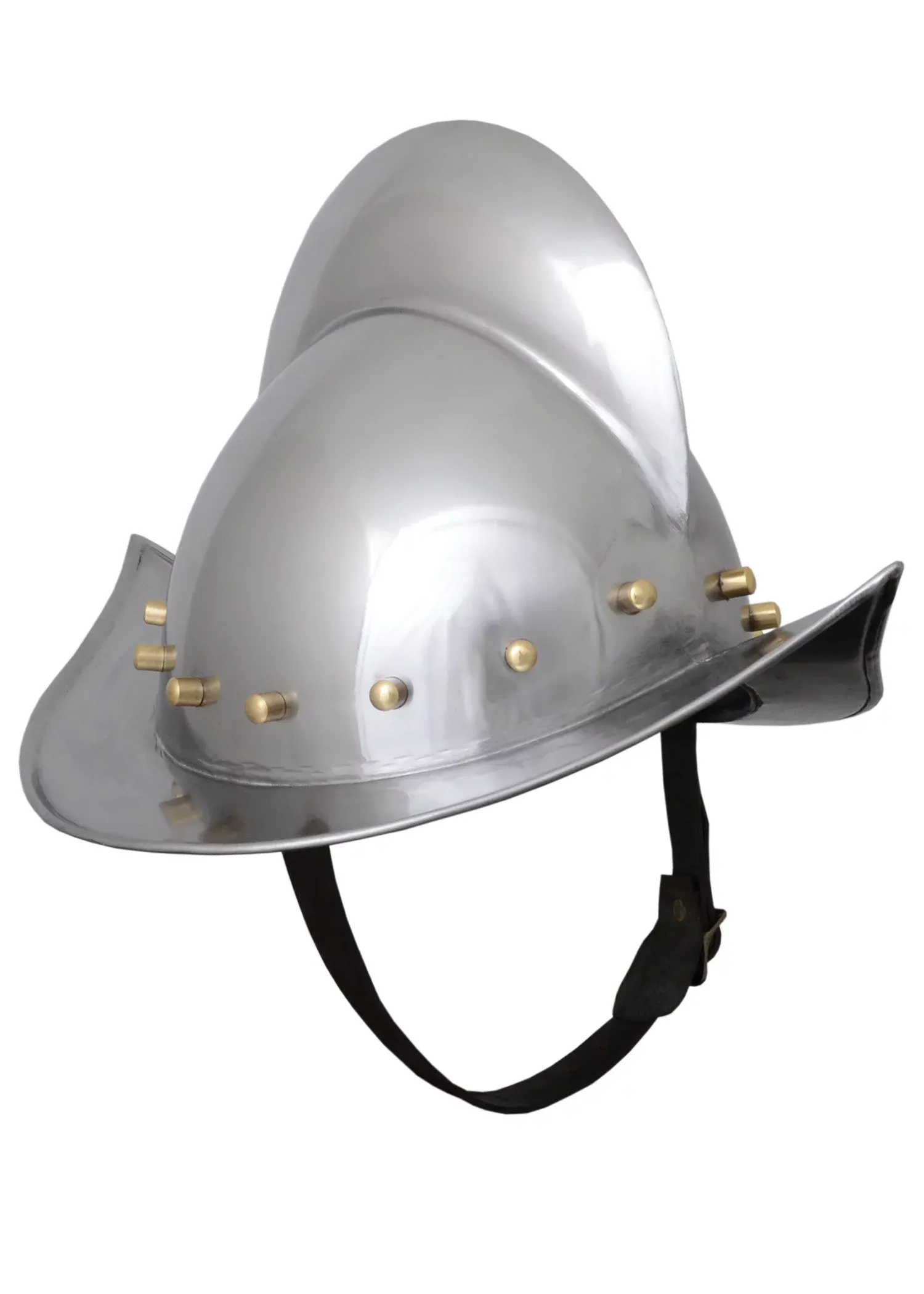What is a Morrión?
The morion is a type of medieval helmet that played a significant role during the Modern Age, especially in the Kingdom of Castile and in other European countries between the 16th and 17th centuries. This emblematic helmet is not only a symbol of the rich military history but also represents the adaptation and evolution of the armors used by soldiers over time.
Origins and Description
The morion emerged as an evolution of the medieval cabe-p, taking inspiration specifically from the Kettle Hat. Its design is easily recognizable by its conical shape and its characteristic crest, similar to a sharp blade, that runs along the top. The wide wings that extend to the sides were crucial in providing additional protection to the neck and shoulders, deflecting impacts toward less vulnerable areas such as the nape and ears.

Use in Infantry
While the morion is predominantly associated with the Spanish tercios and the conquerors of America, its use was much broader. Infantry soldiers, commoners, and even knights and high-ranking figures preferred this type of helmet. Its lightness and ability to leave the face exposed facilitated breathing and improved visibility during combat. Within the Spanish tercios, it was common among pikemen and arquebusiers, although musketeers opted for the chambergo hat as an alternative.
Functional Characteristics
The design of the morion was not only aesthetically distinctive but also functional. Inside, the helmet was equipped with crossed straps that served to support the head, ensuring ventilation and cushioning against vertical impacts. A fabric lining on the inside provided comfort and allowed for a proper fit to different head sizes, while a chin strap kept the helmet secure during combat.

Use in Europe and America
The morion spread beyond Spanish borders, being adopted by numerous armies in Europe during the 16th and 17th centuries. It also had a presence on the American continent, as evidenced by pieces preserved in museums in North and South America. Despite its association with Spanish conquerors, its use was common among various military forces of the time.
Evolution and Disappearance
With the advancement of military technology and improvements in firearms towards the end of the 17th century, the morion gradually fell out of use. However, its name was revived in the late 19th century in Germany to describe a chapeau, which is a type of military hat without wings and with a visor.
Historical Legacy
Although the morion is no longer an essential element in the art of war, its legacy endures. It symbolizes the expansion and cultural influence of Spain in the world. Today, the morion remains part of the uniform of the Swiss Guard of the Vatican, and its design continues to be admired in replicas, historical recreations, and themed events.
| Key Aspects of the Morion | Description |
|---|---|
| Shape | Conical with a sharp crest and wide wings |
| Material | Mainly steel and iron |
| Function | Protection for infantry and light cavalry |
| Duration of Use | Popular in the 16th and 17th centuries |
| Regions of Use | Europe and America |
In summary, the morion is more than just a simple helmet. It is, without a doubt, a living testament to the history, culture, and military achievements of past times. Its design served not only a practical function but also told its own stories in the battles where it was a witness.
















